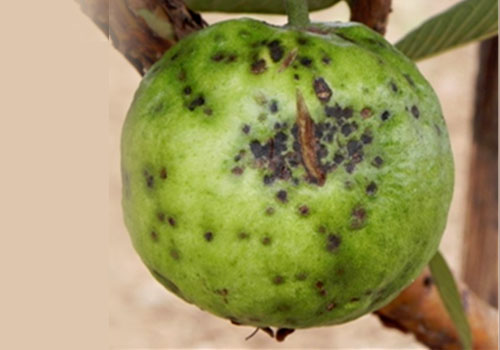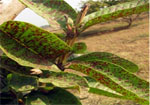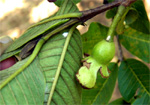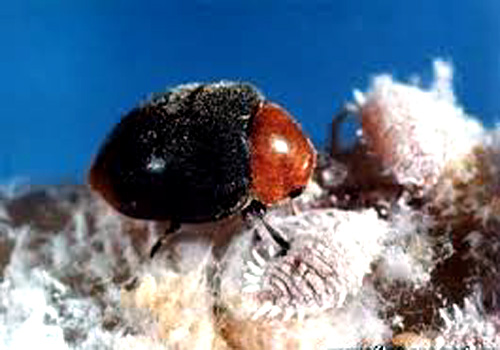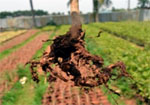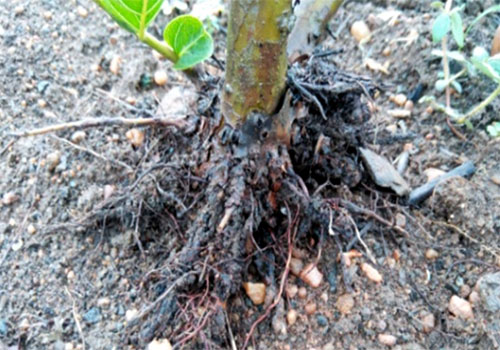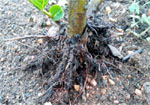Guava - Crop Protection
Guava (Psidium guajava) : Guava grows on small trees with spreading branches, may grow to a height and spread of 6-9 m. Guava trees produce white, 1-inch flowers that yield to small round, oval or pear shaped fruits. They have soft flesh, which may be white, pink, or red depending on variety. The skin is edible. The guava bears fruit all year round. Guava trees grow well in tropical conditions, though it can tolerate drought better than many tropical fruits. It is also adapted to many soil types and may thrive even on shallow, infertile soils. Green when unripe but some cultivars will stay light green even when it is ripe and some will turn yellow.
Diagnostic Solutions
-
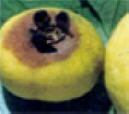 Disease
management :
The important diseases of
guava are wilt, anthracnose, die back, canker, fruit
rot, and dry rot, Styler end rot and seedling
blight
Disease
management :
The important diseases of
guava are wilt, anthracnose, die back, canker, fruit
rot, and dry rot, Styler end rot and seedling
blight
-
 Pest
Management :
The insect pest mostly seen are fruit
fly, green shield scale, Mirid bug, Mealy bug, Bark
eating cater pillar and tea musquito bug.
Pest
Management :
The insect pest mostly seen are fruit
fly, green shield scale, Mirid bug, Mealy bug, Bark
eating cater pillar and tea musquito bug.



